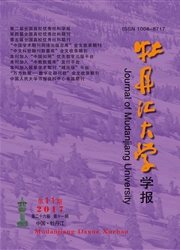

 中文摘要:
中文摘要:
采用数据包络分析(DEA)、空间关联指数和ArcGIS趋势面地统计分析方法评价2003-2012年中国旅游产业生态效率水平、空间变化差异及演化特征,并利用面板数据模型分析其影响因素。研究表明,我国旅游产业生态效率平均水平处于0.701-0.833之间,整体呈现波动性增长趋势。从区域层面看,热点区域范围缩小,而冷点和次冷点区域范围呈现扩大趋势;南北方向上,总体呈现倒"U"型;东西方向上,变化波动较大。国内生产总值、旅游产业结构和旅游产业环境治理投资等因素对我国各省市区旅游产业生态效率的影响不同。鉴于此,提出提升我国旅游产业生态效率的对策建议。
 英文摘要:
英文摘要:
The paper employed data envelopment analysis(DEA),spatial correlation index and statistical analysis and ArcGIS trend surface method to evaluate China's tourism industry eco-efficiency level from 2003 to 2012,spatial variations and evolution characteristics,and then used the panel data model to analyze its influencing factors.The research shows that during the 10 years,the average level of eco-efficiency in China's tourism industry could reach between 0.701-0.833,representing a whole fluctuating growth trend.From a regional perspective,the hot spots present narrowing trend,cold spots and sub-cold spots showed a trend of expansion.In north-south direction,except in 2003,the rest of the year of the tourism industry eco-efficiency change took on an inverted " U" type;in the east-west direction,the fluctuation changed greatly.The factors of gross domestic product(GDP),the structure of the tourism industry,tourism environmental governance investment have different influence on the tourism industry eco-efficiency of China's provinces.In view of this,the relevant measures and suggestions are put forward to promote the eco-efficiency of China's tourism industry.
 同期刊论文项目
同期刊论文项目
 同项目期刊论文
同项目期刊论文
 期刊信息
期刊信息
